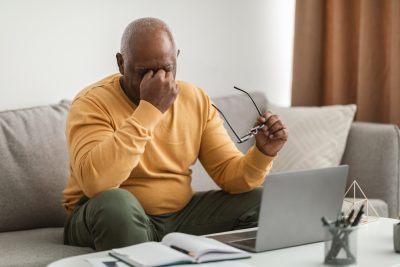Witnessing someone experiencing a stroke can be a frightening and stressful situation. Recognizing the signs early and knowing what to do can potentially save a life. Strokes occur when blood flow to the brain is disrupted, either by a blockage or a rupture in a blood vessel. When this happens, brain cells are deprived of oxygen and begin to die within minutes.
Prompt action is crucial to minimize the damage caused by a stroke. This article will discuss 10 signs that a stroke is happening to someone you are looking at, emphasizing the importance of immediate medical attention and the potential impact of quick intervention.
Strokes are a medical emergency that requires immediate attention. According to the Centers for Disease Control and Prevention (CDC), someone in the United States has a stroke every 40 seconds. It is the fifth leading cause of death and a leading cause of disability in the country. However, many people do not know how to recognize the signs of a stroke or what to do if they see someone experiencing one.
By familiarizing yourself with the signs of a stroke and knowing what steps to take, you can potentially save a life and reduce the long-term impact of a stroke. This article aims to educate readers about the signs of a stroke and empower them to take action when needed.
1. Facial drooping
One of the most common signs of a stroke is facial drooping. This typically occurs on one side of the face, causing it to droop or become numb. Ask the person to smile — if one side of their face droops or feels numb, it could be a sign of a stroke.
2. Arm weakness
Another sign of a stroke is weakness or numbness in one arm. Ask the person to raise both arms. If one arm drifts downward or feels weak, they may be experiencing a stroke.
3. Speech difficulty
Difficulty speaking or understanding speech is another common sign of a stroke. The person may slur their words or have trouble forming coherent sentences.
4. Vision problems
Sudden vision problems, such as blurred or double vision, can also indicate a stroke. The person may have trouble seeing out of one or both eyes.
5. Headache
A sudden, severe headache that is different from any headache they have experienced before can be a sign of a stroke. The headache may be accompanied by other symptoms such as dizziness or vomiting.
6. Dizziness or loss of balance
Feeling dizzy or unsteady on their feet can be a sign of a stroke. The person may also experience a sudden loss of coordination or balance.
7. Nausea or vomiting
Nausea or vomiting, especially if it occurs suddenly and without any other apparent cause, can be a sign of a stroke.
8. Confusion or trouble understanding
Confusion, disorientation, or difficulty understanding what is happening can be a sign of a stroke. The person may seem confused or have trouble following simple instructions.
9. Trouble walking
Sudden difficulty walking, such as stumbling or veering to one side, can be a sign of a stroke. The person may also have trouble with coordination or balance.
10. Loss of consciousness
In severe cases, a stroke can cause a loss of consciousness. If the person loses consciousness, call emergency services immediately.
Act Fast When Recognizing Stroke Symptoms
Recognizing the signs of a stroke and acting quickly can greatly improve the outcome for someone experiencing a stroke. If you notice any of these signs in someone you are looking at, call emergency services immediately. Time is of the essence when it comes to treating strokes, so don’t hesitate to seek help.
Remember the acronym FAST to help identify stroke symptoms: **F**ace drooping, **A**rm weakness, **S**peech difficulty, and **T**ime to call emergency services. Every minute counts when it comes to treating a stroke, as prompt medical attention can prevent further damage to the brain and improve the chances of a full recovery.
It’s also important to stay with the person experiencing the stroke until help arrives and to note the time when the symptoms first appeared, as this information can be crucial for medical professionals. Do not attempt to drive the person to the hospital yourself, as they may need specialized care during transport.
By being aware of the signs of a stroke and knowing what steps to take, you can potentially save a life and ensure that the person receives the care they need as quickly as possible.
This story was created using AI technology.
















